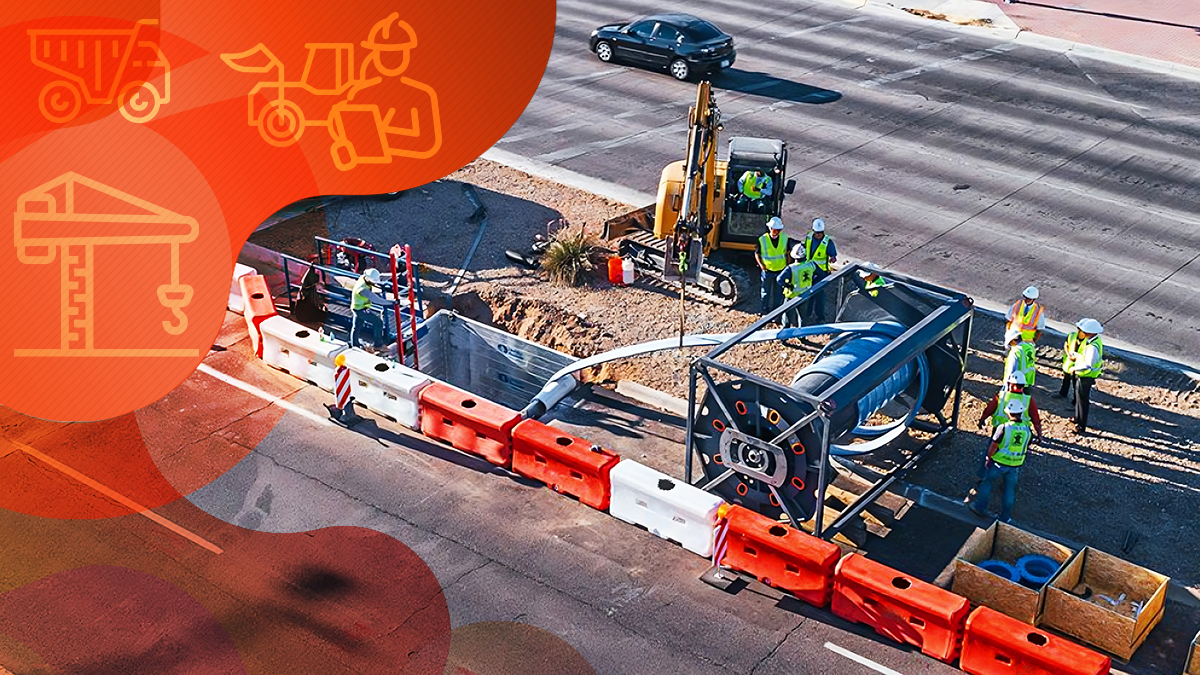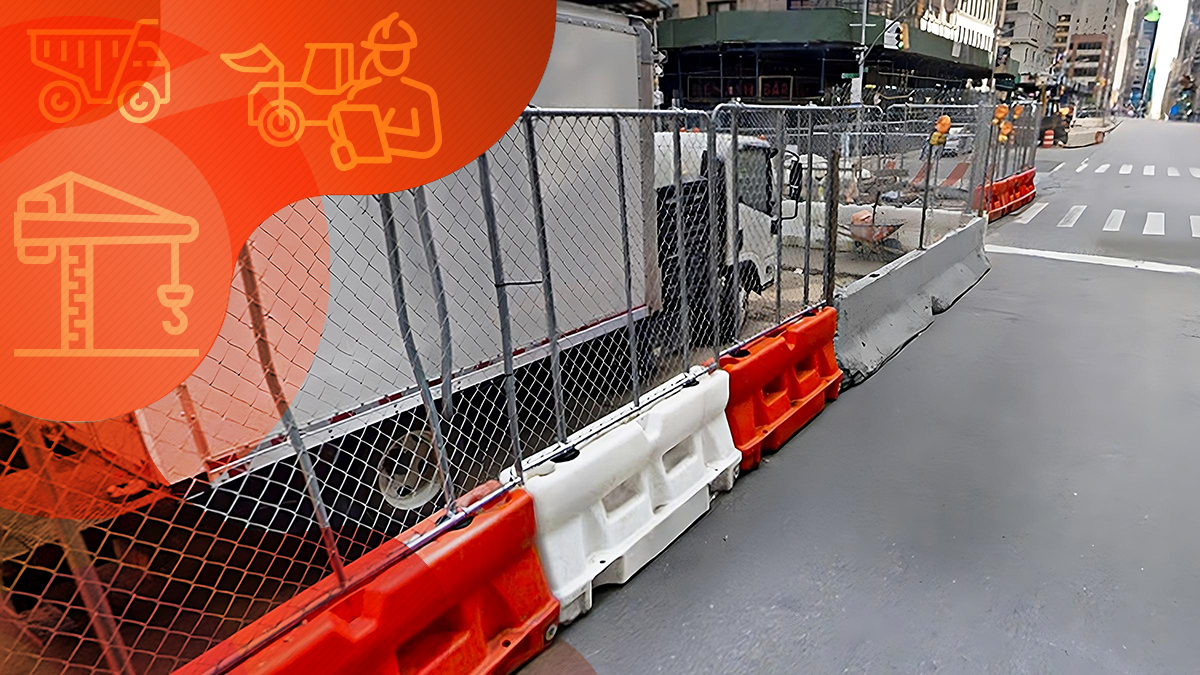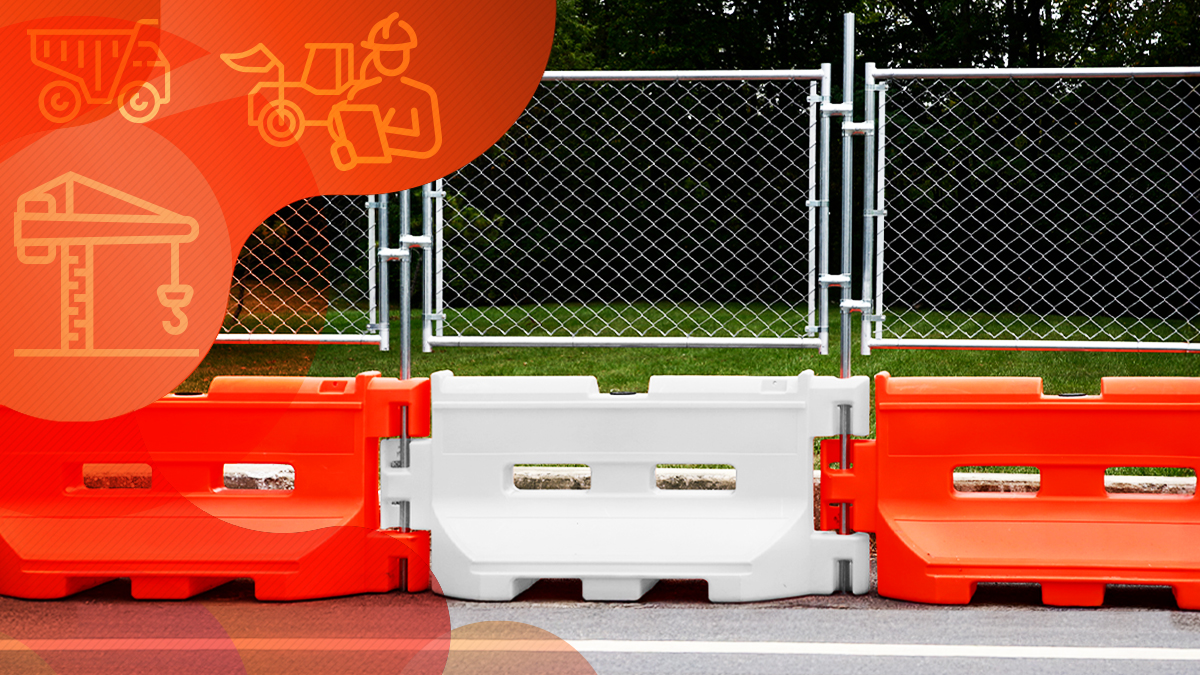What are the 5 NFPA Construction Types?
Improve job site safety by understanding the 5 construction types as defined by NFPA and IBC. Learn about fire-resistance levels, material selection, and compliance to protect workers. Explore our guide for valuable insights and practical safety tips in construction.

Safety is a top priority on construction job sites. For construction workers, one way to improve safety is to better understand construction materials and methods - and the risks associated with them. Staying informed in the construction industry is an important part of staying safe.
The National Fire Protection Association (NFPA) defines building construction types based on their combustibility. The International Building Code (IBC) defines these kinds of buildings as well.
Knowing those building types is important to maintain safety standards during the construction phase. The five types of building construction are as follows:
- Type 1: Fire-resistive
- Type 2: Non-combustible
- Type 3: Ordinary
- Type 4: Heavy timber
- Type 5: Wood-framed
These types of construction are based on the materials in the structure. If you're a construction professional, understanding these five building types and ensuring your construction job site has proper PPE can help keep your workers safe.
If you're a firefighter, understanding these construction types and how they react to exposure to flames can help you stay safe when fighting fires.
How to Determine Building Construction Type
Each building construction type represents a different level of fire protection. For example, type 1, the most fire-resistive group, can last up to four hours against a fire. Types 4 and 5, which encompass structures made of wood, burn much faster.
The standard rate of fire resistance depends on the thickness of wood used in the structure. Each 1.5 inches of wood thickness represents about an hour of fire resistance. Type 4 structures are built with thicker wood, and last longer against a fire.
Local building codes play a role in the type of construction required for the structure. For example, residential structures and multi-family dwellings have different code requirements compared to structures like civic centers.
Knowing the local building codes is important when choosing materials and ensuring the structure is safe and compliant.
Type 1: Fire-Resistive Construction
Type 1 construction includes the fire-resistive group, which typically consists of buildings more than 75 feet tall. This type generally includes office spaces, commercial spaces, and high-rise apartments or condos.
These buildings are made from materials designed to withstand flames for a long time and are considered the safest buildings in the event of a fire. They are also usually more expensive to build.
Type 1 buildings are made from protected steel with fire-resistant coating and reinforced concrete. Building materials in these structures, including structural materials, are non-combustible. These buildings are fire-resistant for up to four hours and are highly unlikely to collapse in the event of a fire.
Once constructed, these buildings have difficult-to-penetrate windows that prevent ventilation if a fire occurs. However, some buildings have self-pressurizing stairwells that stay clear of smoke in the event of a fire. Some also have specialized HVAC systems that help mitigate the spread of fire.
Type 2: Non-combustible
Type 2 construction buildings usually consist of big-box stores and shopping malls that have fire suppression systems. These buildings are made from reinforced masonry or tilt-slab construction. Both types are fire-resistant.
These buildings contain metal and concrete in their roofs, and other materials inside these structures are non-combustible. Unlike type 1 buildings, the steel in these buildings is not coated with fire-resistive coatings. When a fire happens in these structures, this lack of coating means the fire may spread.
These materials are non-combustible, but flammable materials like rubber may be present in the roof as well. When these materials are exposed to flames, the roof may collapse. These buildings have one or two hours of fire resistance.
Temperatures in type 2 buildings can rise quickly, causing the eventual collapse of the building. Firefighters mitigate this problem by ventilating the building during a fire.
Type 3: Ordinary Construction
Type 3 construction buildings consist of structures with wood roofs and non-combustible walls. Some businesses, schools, and homes fit into this category. Older buildings may have conventionally-framed roofs, but newer buildings do not. The building's age can impact its fire resistance and thus the action that firefighters take when approaching these buildings.
These buildings usually feature a combination of non-combustible masonry and fire-cut joists. This means that even if the floors collapse, the walls will usually stand. Empty spaces in attics and floors allow flames to spread quickly, and roof systems in these buildings burn quickly as well.
Type 4: Heavy Timber
Typical type 4 construction buildings were built before the 1960s with large, dense pieces of lumber. The wooden walls and roof spans are combustible, but the lumber is usually thick and surprisingly fire-resistant.
These pieces of lumber are connected by metal plates that can be damaged by high temperatures. The metal plate may fracture in a severe fire.
Damage from leaks, termites, mold and wood rot can increase the risk of collapse. Overall, the age of the building and its condition can play a significant role in how much it resists fire.
Type 5: Wood Framed
Type 5 construction encompasses many modern homes, which are made of lightweight or manufactured wood.
Small restaurants, small office buildings and even small hotels sometimes fit in the Type 5 category. Building materials used in this type of construction are very efficient and practical, but they're combustible. These structures often have combustible materials throughout.


Buildings made from these materials can collapse within minutes after a fire begins. Ventilating homes with wood-framed roofs can help, but the risk of fast collapse is generally quite high. Use of larger beams can help prevent the structure from collapsing.
These buildings are common because they're very budget-friendly. Sprinklers are not common in these buildings, but are recommended.
The Importance of Construction Types
Construction workers and firefighters must understand the different types of building construction. Construction workers must understand each building type's vulnerability and how to strengthen those buildings.
Taking preventative measures is important to ensure workplace safety. Construction industry professionals involved in building design can take steps to reduce the fire risk by choosing materials and methods that align with building codes.
Firefighters must be able to recognize the different types of construction, so they can protect themselves, fight fires effectively, and mitigate risk. Understanding the ways that fire spreads, knowing how and when to ventilate, and what the weight of water will do to a structure is important for saving lives.
Flame-Resistant PPE
Flame-resistant clothing is clothing made from fibers that resist ignition and can self-extinguish when the source of fire is no longer present. Flame-resistant PPE can protect workers when a flash fire occurs, and resists melting under high temperatures.
Flame-resistant PPE can burn, but is more resistant to burning, and increases the chances of survival without injury in the event of a fire.


Worker Safety Tips
While the leading cause of fatalities on construction job sites are falls, slips and trips, fires can also cause injuries. Fire prevention is an important part of construction job site safety. Some tips to help protect your construction crew from fires include:
- Provide training to all employees who may use flame resistant PPE and fire protection equipment (such as fire extinguishers).
- Locate fire protection equipment in easy-to-reach, obvious places.
- Carry portable fire extinguishers to all job sites.
- Maintain portable fire extinguishers regularly to ensure they're ready to use.
- Store and dispose of flammable liquids properly.
- Follow a specific plan for inspecting equipment and overseeing construction activities to ensure that all equipment is fully maintained, and workers are working safely.
PPE Tips
If you're a construction supervisor, foreman, company owner or safety professional, it's important to stay up to date on all the latest safety equipment and PPE to keep your workers safe.
- Follow OSHA regulations and product updates to learn when new types of PPE and equipment have been required or released, to ensure your company always has the best equipment available.
- Inspect PPE before each new project, periodically throughout projects, and after each project to ensure it's still in usable condition.
- Require workers to use PPE as appropriate on the job site, and report when PPE becomes damaged.
- Train all workers to use PPE to create a culture of safety.
- Maintain fire suppression systems and fire extinguishers in accordance with OSHA requirements.


OSHA Requirements
OSHA requires fire extinguishers on the job site to be appropriate for the type of fire that may occur. Using the wrong type of fire extinguisher can make the fire worse. Construction professionals must educate themselves on the types of fire extinguishers and other fire-related OSHA requirements to ensure their job site is safe.
Understanding the diverse construction types outlined by the NFPA not only enhances safety measures for construction workers. By comprehending the unique characteristics and vulnerabilities of each construction type, workers can proactively mitigate risks and protect lives.
To delve deeper into safety practices, explore our guide on preventing common construction site accidents. Stay informed, prioritize safety, and make a difference in safeguarding lives on the job site!
Trend now

Reducing Impact Damage with Water-Filled Plastic Jersey Barriers
Understanding the effects of barrier materials on vehicles and their occupants can help improve road safety.

Choosing Between Concrete or Plastic Jersey Barriers
Not all barriers are built the same. Here’s what to know before choosing between plastic and concrete.

Advantages of Water Barriers with Fence Toppers
Learn how a fence topper transforms water barriers into a more secure, private, and effective work site solution.

